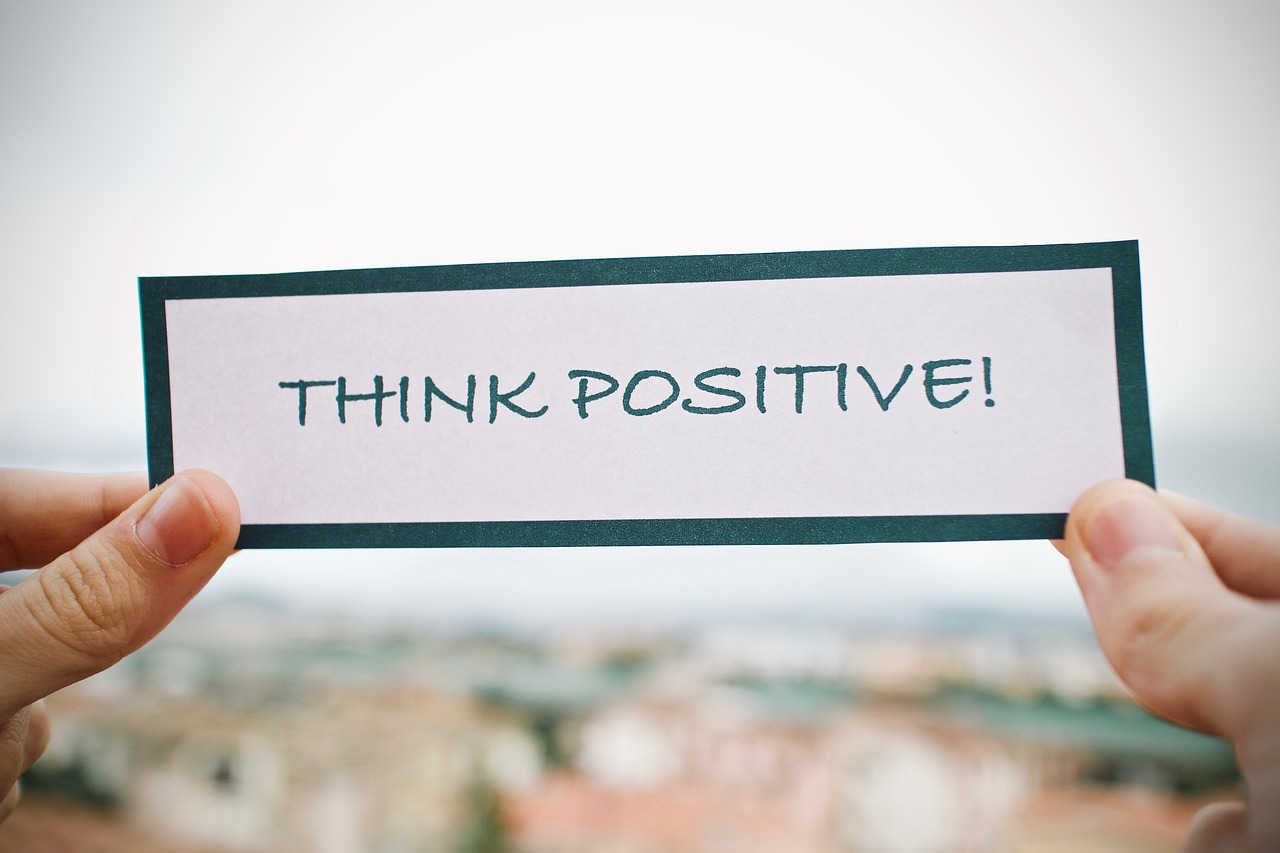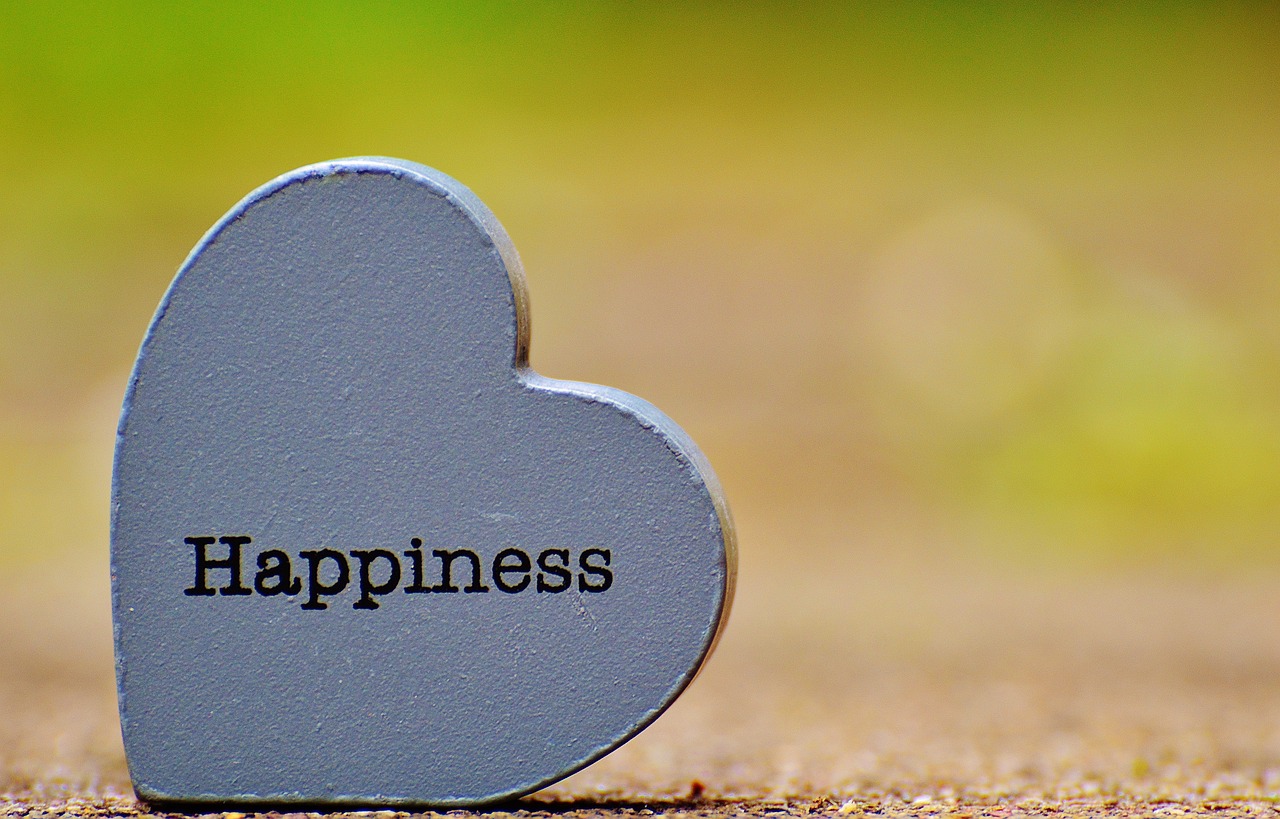The Role of Positive Reinforcement in Behavior Modification
Positive reinforcement is a powerful tool that can transform behaviors in various aspects of life, from classrooms to therapy sessions, and even in our daily interactions. But what exactly does it mean? In simple terms, positive reinforcement involves providing a reward following a desired behavior, which increases the chances of that behavior being repeated in the future. Imagine a dog receiving a treat for sitting on command; it learns that good behavior leads to a reward. This principle is rooted in psychological theories that emphasize the importance of rewards in shaping behavior.
At its core, positive reinforcement taps into the human desire for validation and approval. We all crave recognition for our efforts, whether it's a teacher praising a student for their hard work or a manager acknowledging an employee's contributions. This process not only boosts morale but also creates a positive feedback loop that encourages individuals to continue exhibiting desirable behaviors. The beauty of positive reinforcement lies in its versatility; it can be applied in numerous settings, adapting to the unique needs of individuals and groups alike.
In educational environments, for instance, teachers can employ positive reinforcement to cultivate a more engaging and productive classroom atmosphere. By rewarding students for their achievements, educators can foster a sense of accomplishment that drives further success. Similarly, in therapeutic contexts, therapists utilize positive reinforcement to motivate clients towards behavioral change, helping them to overcome challenges and build healthier habits. The applications are vast, and the benefits are profound.
As we delve deeper into the principles, types, and applications of positive reinforcement, we'll uncover how this approach can lead to significant improvements in motivation, self-esteem, and overall well-being. So, whether you're a teacher, a therapist, or simply someone looking to enhance your interactions with others, understanding and implementing positive reinforcement can be a game-changer.
- What is positive reinforcement? Positive reinforcement is the process of encouraging desired behaviors by providing rewards or incentives following those behaviors.
- How does positive reinforcement work? By associating a specific behavior with a positive outcome, individuals are more likely to repeat that behavior in the future.
- Can positive reinforcement be used in all settings? Yes, positive reinforcement can be effectively applied in various settings, including education, therapy, and everyday life.
- What are some examples of positive reinforcement? Examples include praise, rewards, tangible gifts, and social recognition.

Understanding Positive Reinforcement
Positive reinforcement is a fascinating concept rooted in the principles of behavioral psychology. At its core, it involves introducing a rewarding stimulus immediately after a desired behavior occurs. This approach not only encourages the repetition of that behavior but also creates a positive association in the mind of the individual. Imagine training a puppy: every time it sits on command, you reward it with a treat. Over time, the puppy learns that sitting leads to a tasty reward, and it becomes more likely to sit when asked. This simple yet effective strategy underpins the essence of positive reinforcement.
The psychological foundation of positive reinforcement lies in the idea that behaviors followed by favorable outcomes are more likely to be repeated. This principle can be traced back to the work of B.F. Skinner, who conducted extensive research on operant conditioning. Skinner's experiments demonstrated that behaviors could be shaped and modified through reinforcement, paving the way for various applications in education, therapy, and everyday life.
To delve deeper, let's break down the key concepts of positive reinforcement:
- Stimulus: The rewarding element introduced following the desired behavior.
- Behavior: The action that is being encouraged or modified.
- Consequences: The outcomes that follow the behavior, which can be positive (reinforcement) or negative (punishment).
It's essential to recognize that not all rewards are equal. The effectiveness of positive reinforcement can vary significantly based on individual preferences and contexts. For instance, while one person might thrive on verbal praise, another might find more motivation in tangible rewards like gift cards or extra privileges. Understanding these nuances can be crucial for effectively applying positive reinforcement in different scenarios.
Moreover, positive reinforcement is not just about the immediate reward; it also plays a vital role in long-term behavioral change. When individuals consistently receive positive feedback, it fosters a sense of accomplishment and encourages them to strive for further success. This cycle of reinforcement can lead to profound changes in behavior, making it a powerful tool in various settings.
In summary, understanding positive reinforcement involves grasping its psychological underpinnings and recognizing the different ways it can be applied. By effectively utilizing this approach, we can create environments that promote desirable behaviors, whether in the classroom, therapeutic settings, or our daily interactions. The key is to tailor the reinforcement strategies to fit the individual, ensuring that the rewards resonate and motivate effectively.

Types of Positive Reinforcement
When we think about positive reinforcement, it's essential to recognize that it comes in various forms, each tailored to suit different contexts and individuals. The beauty of positive reinforcement lies in its flexibility; it can be as simple as a smile or as complex as a structured reward system. Understanding these different types can help us effectively modify behaviors in a way that resonates with the individual. Let's dive into the main categories of positive reinforcement and explore how they can be effectively employed.
One of the most common forms of positive reinforcement is tangible rewards. These are physical items or incentives that can be given to individuals to motivate them to repeat a desired behavior. For instance, in educational settings, teachers might use tangible rewards like stickers or small toys to encourage students to complete their assignments. This type of reinforcement is particularly effective because it provides immediate gratification, making the connection between behavior and reward clear and straightforward.
Tangible rewards can take many forms, and their effectiveness often depends on the individual receiving them. Some examples include:
- Gift Cards and Prizes: Utilizing gift cards and prizes can significantly enhance motivation. For instance, a teacher might offer a gift card to a local bookstore for students who excel in reading. This not only motivates students but also encourages them to engage with literature.
- Monetary Incentives: In various contexts, monetary incentives can encourage behavior change. For example, businesses might offer bonuses for meeting performance targets. However, it’s crucial to balance these incentives, as over-reliance on monetary rewards can diminish intrinsic motivation.
Another critical type of positive reinforcement is social reinforcement. This includes verbal praise, recognition, and other forms of social approval that can significantly impact an individual's behavior. When someone receives praise for their efforts, it boosts their confidence and encourages them to continue striving for success. Think of it this way: when you receive a compliment, it feels good, right? That good feeling can motivate you to repeat the behavior that earned you that compliment in the first place.
In summary, understanding the different types of positive reinforcement allows us to tailor our approaches to behavior modification effectively. Whether through tangible rewards or social reinforcement, the key is to find what resonates most with the individual. By doing so, we can create an environment where positive behaviors are not only encouraged but celebrated.
Tangible Rewards
Tangible rewards are concrete incentives that can be directly given to individuals to encourage desired behaviors. These rewards can take many forms, such as money, gifts, or even tokens. The idea behind using tangible rewards is simple yet powerful: when someone receives a reward for a specific action, they are more likely to repeat that action in the future. This concept is rooted in behavioral psychology and is widely applied in various settings, particularly in education and behavioral therapy.
One of the most effective aspects of tangible rewards is their immediacy. For instance, when a student successfully completes a task and receives a small gift or a token, it creates a direct connection between their effort and the reward. This immediate feedback loop can significantly enhance motivation. In educational settings, teachers often use tangible rewards to create a positive reinforcement cycle, where students are encouraged to participate more actively in class. The excitement of receiving a reward can transform a mundane task into an engaging challenge.
However, it’s crucial to implement tangible rewards thoughtfully. If rewards are given too frequently or without clear expectations, they may lose their value and effectiveness. To maintain the impact of tangible rewards, it’s essential to ensure that they are meaningful and tied to specific behaviors. For example, a teacher might offer a gift card for a local ice cream shop as a reward for consistent homework completion over a month. This not only motivates the students but also makes them look forward to the reward, creating a sense of anticipation.
Here’s a quick look at some common types of tangible rewards:
| Type of Reward | Description |
|---|---|
| Gift Cards | Vouchers for stores or services that allow recipients to choose their rewards. |
| Physical Gifts | Toys, books, or educational materials that can be given as rewards. |
| Tokens | Small items that can be collected and exchanged for a larger reward. |
While tangible rewards can be incredibly effective, it's important to balance them with intrinsic motivation. Relying solely on external rewards can lead to a lack of internal motivation over time. For instance, if a student only completes their homework for the promise of a reward, they might struggle to find the motivation to do so when rewards are no longer offered. Therefore, combining tangible rewards with strategies that promote intrinsic motivation, such as fostering a love for learning, can lead to more sustainable behavior change.
In conclusion, tangible rewards can serve as powerful tools in behavior modification strategies. When used effectively, they can motivate individuals, enhance engagement, and create positive behavioral patterns. However, it’s essential to apply them judiciously and in conjunction with other methods that promote intrinsic motivation. This balanced approach can lead to long-lasting changes in behavior and a more fulfilling experience for individuals in educational and therapeutic settings.
Gift Cards and Prizes
When it comes to motivating individuals, especially in educational settings, can be game changers. Imagine a classroom where students are not just learning but are also excited about their achievements. Gift cards, for example, can serve as a tangible reward that students can look forward to. They can be redeemed for their favorite stores or activities, making the reward feel personal and meaningful. This anticipation can drive students to engage more fully in their studies, knowing that their efforts might lead to a reward that they genuinely desire.
Moreover, prizes can take on various forms, from small tokens like stickers and stationery to larger rewards like electronic gadgets or experiences such as movie tickets. The key is to ensure that the prizes are appealing to the target audience. For instance, younger students might be thrilled with a new toy, while teenagers might prefer gift cards to popular stores or online platforms.
To maximize the effectiveness of gift cards and prizes, it's crucial to implement them strategically. Here are some best practices:
- Clear Criteria: Establish clear criteria for earning rewards. This transparency helps individuals understand what behaviors or achievements will lead to rewards.
- Variety: Offer a variety of prizes to cater to different interests. This diversity ensures that everyone feels included and motivated.
- Timeliness: Distribute rewards promptly after the desired behavior is exhibited. This immediate reinforcement strengthens the connection between the behavior and the reward.
Incorporating gift cards and prizes into behavior modification strategies not only enhances motivation but also fosters a positive environment. When individuals feel recognized and rewarded for their efforts, it builds a sense of achievement and encourages them to continue striving for success. It's like adding fuel to a fire—the more you feed it, the brighter it burns!
Q1: How do gift cards and prizes enhance motivation?
Gift cards and prizes serve as tangible rewards that can increase excitement and engagement. When individuals know they have the chance to earn something they value, they are more likely to put in the effort required to achieve their goals.
Q2: What types of prizes are most effective?
The effectiveness of prizes can vary based on the audience. Younger children might respond well to toys and games, while older students might prefer experiences or gift cards to their favorite stores. It's essential to know your audience to choose the right rewards.
Q3: Can gift cards and prizes be used in professional settings?
Absolutely! Many workplaces use gift cards and prizes to recognize employee achievements and boost morale. They can serve as incentives for meeting targets or completing projects successfully.
Q4: Are there any drawbacks to using prizes as motivation?
While prizes can be effective, relying too heavily on them may lead to individuals only working for the reward rather than the intrinsic satisfaction of their accomplishments. It's important to balance external rewards with intrinsic motivation.
Monetary Incentives
Monetary incentives are one of the most tangible forms of positive reinforcement, and they can serve as powerful motivators for behavior change across various contexts. The concept is simple: when individuals are rewarded with money or financial bonuses for exhibiting desired behaviors, they are more likely to repeat those behaviors in the future. This principle is rooted in behavioral psychology, where the promise of a financial reward can act as a strong motivator. For example, many companies implement performance bonuses to encourage employees to meet or exceed their targets. Similarly, educational institutions may offer scholarships or stipends to students who achieve specific academic goals.
However, while monetary incentives can effectively motivate behavior, they come with both advantages and potential drawbacks. On the one hand, financial rewards can provide immediate gratification, making them appealing to individuals who respond well to instant feedback. For instance, a student might study harder for a test if they know a cash prize awaits them for achieving a high score. On the other hand, relying solely on monetary incentives can lead to a "what's in it for me?" mentality, where individuals may only engage in desired behaviors for the financial reward rather than developing intrinsic motivation. This can undermine long-term behavioral change and may even lead to resentment if individuals feel that their efforts are only recognized through financial means.
To maximize the effectiveness of monetary incentives, it is crucial to implement them thoughtfully. Here are some best practices to consider:
- Set Clear Goals: Clearly define the behaviors you want to encourage and ensure that the financial rewards are tied directly to these goals.
- Balance Rewards: Combine monetary incentives with other forms of reinforcement, such as praise and recognition, to foster a more holistic approach to motivation.
- Monitor and Adjust: Regularly assess the effectiveness of your monetary incentive programs and be willing to make adjustments based on feedback and outcomes.
In conclusion, while monetary incentives can be a powerful tool for behavior modification, they should be used judiciously and in conjunction with other motivational strategies. By understanding the psychological impact of financial rewards and implementing them effectively, individuals and organizations can harness the power of monetary incentives to drive positive change.
- What are monetary incentives? Monetary incentives are financial rewards given to individuals for achieving specific behaviors or goals.
- How effective are monetary incentives? They can be very effective in motivating behavior, but their impact can vary based on individual preferences and the context in which they are used.
- Can monetary incentives reduce intrinsic motivation? Yes, if used excessively or exclusively, they may diminish intrinsic motivation by making individuals focus solely on the financial reward.
Social Reinforcement
Social reinforcement is a powerful tool in the realm of behavior modification, tapping into our innate desire for connection and approval. When we think about what drives us to act in certain ways, it's often the recognition and praise we receive from others that fuels our motivation. Imagine a child who completes their homework and receives a heartfelt compliment from their teacher; that simple act of acknowledgment can spark a desire to continue putting in effort. Social reinforcement involves the use of verbal praise, social approval, or even group recognition to encourage behaviors that are desirable.
One of the most compelling aspects of social reinforcement is its psychological impact. Humans are social beings, and our behaviors are significantly influenced by how others perceive us. When we receive positive feedback, it not only boosts our mood but also reinforces the behavior that led to that feedback. This creates a cycle where the more we engage in a behavior, the more praise we receive, and thus, the more we want to continue that behavior. For instance, in a workplace setting, an employee who consistently meets their targets might receive public acknowledgment in a team meeting, reinforcing their productivity and encouraging others to strive for similar recognition.
In practice, social reinforcement can take many forms. Here are a few examples:
- Praise: Simple verbal affirmations can work wonders. A teacher saying, "Great job on that project!" can motivate a student to keep working hard.
- Recognition: Publicly acknowledging someone's efforts, such as employee of the month awards, can inspire not just the recipient but also their peers.
- Social Support: Encouragement from friends or family can be a significant motivator for someone trying to make a lifestyle change, such as losing weight or quitting smoking.
Furthermore, social reinforcement isn't just limited to the classroom or workplace; it permeates our everyday lives. Think about how social media has changed the game. A simple "like" on a post can serve as a form of social reinforcement, encouraging individuals to share more of what others enjoy. This digital age has amplified the effects of social reinforcement, creating a landscape where positive interactions can lead to a chain reaction of desirable behaviors.
However, it’s important to wield social reinforcement wisely. Over-reliance on external validation can lead to a dependency where individuals only seek to please others rather than find intrinsic motivation. The key is to strike a balance; while social reinforcement is crucial, fostering an environment where individuals also appreciate their own achievements is equally important. This dual approach helps build a resilient foundation for behavior change, where individuals feel both supported by their community and confident in their abilities.
In summary, social reinforcement is an essential component of behavior modification that leverages our social nature. By recognizing and praising positive behaviors, we can create an environment that not only promotes desired actions but also nurtures self-esteem and motivation. Whether in educational settings, workplaces, or personal relationships, the power of social reinforcement can lead to profound and lasting changes.
Q1: What is social reinforcement?
A1: Social reinforcement refers to the process of using social interactions, such as praise or recognition, to encourage desired behaviors. It taps into our need for social approval and can significantly enhance motivation.
Q2: How can social reinforcement be applied in the classroom?
A2: Teachers can use social reinforcement by providing verbal praise, recognizing student achievements publicly, and fostering a supportive classroom environment where students feel valued.
Q3: Are there any drawbacks to social reinforcement?
A3: Yes, while social reinforcement is beneficial, over-reliance on it can lead individuals to seek external validation excessively, potentially undermining their intrinsic motivation. It's essential to encourage self-recognition alongside social feedback.

Applications in Education
Positive reinforcement is a game-changer in educational settings, transforming the way teachers motivate and engage their students. Imagine walking into a classroom where every student feels valued and excited to learn. That’s the power of positive reinforcement! By acknowledging and rewarding desirable behaviors, educators can create an environment that not only promotes learning but also encourages students to take ownership of their actions. It’s like planting seeds of motivation that bloom into a garden of academic success.
One of the most effective strategies teachers can employ is the use of praise and recognition. A simple "Great job!" or "I love how you helped your classmate!" can do wonders for a student's self-esteem. When students know that their efforts are noticed and appreciated, they are more likely to repeat those behaviors. This creates a positive feedback loop where students feel motivated to engage in classroom activities, participate in discussions, and help their peers.
Additionally, implementing reward systems can significantly enhance student motivation. For instance, teachers can create a point system where students earn points for completing assignments, participating in class, or exhibiting good behavior. Accumulated points can then be exchanged for tangible rewards, such as extra recess time, homework passes, or even small prizes. This not only incentivizes students to perform better but also fosters a sense of competition and camaraderie among classmates.
| Type of Reward | Example | Benefits |
|---|---|---|
| Tangible Rewards | Gift cards, prizes | Immediate motivation, excitement |
| Social Recognition | Praise, certificates | Boosts self-esteem, encourages peer support |
| Intrinsic Motivation | Personal goals, self-reflection | Fosters independence, long-term engagement |
Moreover, behavioral contracts are another innovative application of positive reinforcement in education. These contracts outline specific expectations for students and the rewards they can earn for meeting those expectations. For example, a student might agree to complete all homework assignments for a month in exchange for a special reward, like a field trip or a fun class activity. This not only promotes accountability but also encourages students to take responsibility for their learning.
Incorporating positive reinforcement into classroom management techniques can also lead to a more harmonious learning environment. Teachers can set clear rules and expectations, and when students follow these guidelines, they can be rewarded with privileges, such as choosing their own seats or leading a class discussion. This approach not only minimizes disruptive behavior but also empowers students, making them feel like active participants in their education.
Ultimately, the application of positive reinforcement in education is about more than just improving grades; it’s about cultivating a supportive atmosphere where students can thrive academically and socially. By recognizing and rewarding positive behaviors, educators can help students build confidence, develop a love for learning, and foster meaningful relationships with their peers and teachers. So, the next time you see a student excel, don’t hesitate to celebrate their success—it could be the spark that ignites their passion for learning!
- What is positive reinforcement? Positive reinforcement is the practice of introducing a rewarding stimulus after a desired behavior, increasing the likelihood of that behavior being repeated.
- How can teachers implement positive reinforcement in the classroom? Teachers can implement positive reinforcement by using praise, reward systems, and behavioral contracts to encourage desirable behaviors among students.
- What are some effective rewards for students? Effective rewards include tangible items like gift cards, social recognition such as certificates, and opportunities for intrinsic motivation like personal goals.
Classroom Management Techniques
When it comes to classroom management, the use of positive reinforcement can be a game changer. Imagine walking into a classroom where students are eager to participate, their faces lit up with enthusiasm, and their hands shoot up in the air, ready to share their thoughts. This isn't just a dream; it's a reality that can be achieved through effective management techniques that leverage the power of positive reinforcement. By recognizing and rewarding positive behaviors, teachers can create an environment that not only fosters learning but also encourages students to strive for excellence.
One effective technique is the implementation of a reward system. This system can be as simple as a sticker chart, where students earn stickers for demonstrating positive behavior, such as helping a classmate or completing assignments on time. Once they accumulate a certain number of stickers, they can exchange them for a reward, like extra recess time or a homework pass. This method not only motivates students but also instills a sense of accomplishment.
Another powerful strategy is the use of praise and recognition. When a teacher publicly acknowledges a student’s effort or achievement, it can have a profound impact on that student’s self-esteem and motivation. For instance, saying something like, “I’m so proud of how you helped your peers today!” not only reinforces the positive behavior but also encourages others to follow suit. This kind of social reinforcement can create a ripple effect throughout the classroom.
Moreover, establishing clear expectations and consistently applying positive reinforcement can lead to a more structured environment. Teachers can create a behavioral contract that outlines the expected behaviors and the corresponding rewards for meeting those expectations. This contract serves as a visual reminder for students and fosters accountability. When students know what is expected of them and what they can earn in return, they are more likely to engage positively.
Incorporating these techniques into classroom management not only enhances student engagement but also creates a supportive learning atmosphere. The benefits are clear: students feel valued, their motivation increases, and the overall classroom dynamics improve. Ultimately, by harnessing the principles of positive reinforcement, teachers can transform their classrooms into thriving hubs of learning and collaboration.
- What is positive reinforcement?
Positive reinforcement involves providing a rewarding stimulus after a desired behavior, which increases the likelihood of that behavior being repeated.
- How can I implement positive reinforcement in my classroom?
You can implement positive reinforcement by using reward systems, praise, and clear behavioral expectations, ensuring students know what behaviors are being rewarded.
- What are some examples of tangible rewards?
Examples of tangible rewards include stickers, gift cards, extra recess time, or homework passes, which can motivate students to engage in positive behaviors.
- Can positive reinforcement be used in other settings besides education?
Absolutely! Positive reinforcement is effective in various settings, including therapy, workplaces, and even at home, to encourage desired behaviors.
Behavioral Contracts
Behavioral contracts are powerful tools that can significantly enhance the effectiveness of positive reinforcement strategies. These contracts serve as written agreements between parties, typically outlining specific behaviors that are expected, the rewards for achieving those behaviors, and the consequences for failing to meet those expectations. Think of a behavioral contract as a roadmap; it clearly defines the journey toward desired behavior, making it easier for individuals to navigate their way to success. By setting clear goals and rewards, these contracts not only promote accountability but also create a structured environment that fosters behavioral change.
When implementing a behavioral contract, it's essential to involve all parties in the creation process. This ensures that everyone understands and agrees to the terms laid out. For example, in a classroom setting, a teacher might collaborate with students to draft a contract that specifies the behaviors they want to encourage, such as raising hands to speak or completing assignments on time. The contract might include:
- Expected Behaviors: Clear and specific actions that students need to demonstrate.
- Rewards: Tangible or intangible incentives that will be provided upon meeting the expectations.
- Consequences: What will happen if the expectations are not met, which should be fair and constructive.
By engaging students in this process, teachers can foster a sense of ownership and motivation. Additionally, behavioral contracts can be tailored to fit various age groups and settings, making them versatile tools for behavior modification. In therapy, for instance, a therapist might use a behavioral contract with a client to outline specific goals related to emotional regulation or coping strategies. This not only helps the client stay focused but also allows for measurable progress tracking.
Moreover, the effectiveness of behavioral contracts is often enhanced when they are revisited and revised regularly. This practice allows for adjustments based on the individual's progress and changing needs. For example, if a student is consistently meeting their goals, the contract can be updated to include new challenges or higher expectations, ensuring continued growth. Conversely, if a student is struggling, the contract can be modified to provide additional support or resources.
In conclusion, behavioral contracts are more than just agreements; they are dynamic tools that can drive positive change when implemented thoughtfully. By clearly outlining expectations, rewards, and consequences, these contracts not only motivate individuals but also create a structured environment conducive to learning and growth. Whether in educational settings or therapeutic environments, the incorporation of behavioral contracts can lead to significant improvements in behavior modification efforts.
- What is a behavioral contract? A behavioral contract is a written agreement that outlines expected behaviors, rewards for achieving them, and consequences for failing to meet those expectations.
- How can I create an effective behavioral contract? Involve all parties in the creation process, ensure clarity in expectations, and revisit the contract regularly for adjustments.
- Where can behavioral contracts be used? Behavioral contracts can be used in various settings, including classrooms, therapy sessions, and even at home to encourage desired behaviors.
- What are the benefits of using behavioral contracts? They promote accountability, enhance motivation, and provide a structured approach to behavior modification.

Applications in Therapy
Positive reinforcement plays a pivotal role in therapeutic settings, acting as a catalyst for behavioral change in clients. Therapists utilize this approach to help individuals replace maladaptive behaviors with more constructive ones. By rewarding positive actions, therapists create an environment where clients feel motivated to engage in desired behaviors, ultimately leading to improved mental health and well-being. Imagine a garden where you only water the flowers; in the same way, positive reinforcement nurtures the growth of good behaviors while allowing negative ones to wither away.
In therapy, the application of positive reinforcement can take various forms, whether through verbal praise, tangible rewards, or even social recognition. For instance, when a client successfully completes a challenging task or demonstrates a new skill, the therapist might offer enthusiastic praise or a small reward. This not only reinforces the behavior but also builds a trusting relationship between the therapist and client, creating a safe space for further exploration and growth.
One of the most effective frameworks that incorporate positive reinforcement is Cognitive Behavioral Therapy (CBT). In CBT, therapists often set specific goals with clients and use reinforcement to encourage progress. For example, if a client successfully practices a coping strategy in real-life situations, the therapist may acknowledge this achievement, reinforcing the idea that such efforts lead to positive outcomes. This not only motivates the client but also helps them internalize the skills they are learning.
Another significant application is within Applied Behavior Analysis (ABA), especially for individuals with autism spectrum disorders. ABA heavily relies on positive reinforcement to teach new skills and reduce undesired behaviors. In this context, a therapist may employ a structured approach where specific behaviors are identified, and appropriate reinforcements are provided when those behaviors are exhibited. This method can be particularly effective in helping clients learn essential life skills, from communication to social interactions.
To illustrate the effectiveness of positive reinforcement in therapy, consider the following table that outlines key aspects of its application:
| Therapeutic Approach | Application of Positive Reinforcement | Expected Outcomes |
|---|---|---|
| Cognitive Behavioral Therapy (CBT) | Setting goals and rewarding progress | Increased motivation and skill acquisition |
| Applied Behavior Analysis (ABA) | Structured reinforcement for skill learning | Enhanced life skills and reduced challenging behaviors |
In conclusion, the applications of positive reinforcement in therapy are vast and varied, providing essential tools for therapists to facilitate change. By recognizing and rewarding positive behaviors, therapists not only help clients achieve their goals but also foster a sense of accomplishment and self-worth. This dynamic approach transforms the therapeutic experience into a collaborative journey, where both the therapist and client work together towards a brighter future.
- What is positive reinforcement? Positive reinforcement is a technique that involves providing a rewarding stimulus after a desired behavior, increasing the likelihood of that behavior being repeated.
- How is positive reinforcement used in therapy? In therapy, positive reinforcement is used to encourage clients to adopt positive behaviors and skills by rewarding them for their progress and achievements.
- Can positive reinforcement be effective for all clients? While positive reinforcement is generally effective, the specific needs and responses of each client may vary. Therapists often tailor their approaches to fit individual circumstances.
- What are some examples of positive reinforcement in therapy? Examples include verbal praise, small rewards, or social recognition when a client achieves a goal or demonstrates a desired behavior.
Reinforcement in Cognitive Behavioral Therapy
Cognitive Behavioral Therapy (CBT) is a powerful therapeutic approach that focuses on the interplay between thoughts, feelings, and behaviors. One of the core components of CBT is the use of positive reinforcement to encourage healthier behavioral patterns. By rewarding desired behaviors, therapists can effectively motivate clients to adopt new, more constructive habits. This method not only helps in changing maladaptive behaviors but also empowers individuals to take charge of their own mental health.
In CBT, reinforcement can take various forms, including verbal praise, tangible rewards, or even self-reward systems. For instance, a therapist might encourage a client to practice a new coping strategy and reward them with positive feedback when they successfully implement it. This creates a cycle where the client feels recognized and motivated to continue using the technique. The psychological impact of this reinforcement is profound; it helps clients associate positive feelings with their new behaviors, making them more likely to repeat these actions in the future.
Moreover, the integration of reinforcement strategies in CBT can be tailored to each individual's needs. For example, some clients may respond better to social reinforcement, such as group therapy settings where they receive encouragement from peers. Others might find more motivation in personal achievements, such as tracking their progress in a journal. By customizing reinforcement techniques, therapists can enhance the effectiveness of CBT and foster a more supportive therapeutic environment.
In practice, therapists often employ a structured approach to reinforcement within CBT. They might set specific goals with clients and outline the rewards for achieving these goals. This can be visualized in a simple table:
| Goal | Behavior | Reinforcement |
|---|---|---|
| Practice coping strategies | Use a breathing technique when anxious | Verbal praise from the therapist |
| Complete homework assignments | Submit exercises on time | Small gift or token |
| Attend all therapy sessions | Regular attendance | Recognition in group therapy |
This structured reinforcement not only provides clarity but also helps clients understand the direct correlation between their efforts and the rewards they receive. It's like putting a coin in a vending machine; you know that if you press the right buttons (perform the desired behaviors), you'll get something valuable in return.
Ultimately, the role of positive reinforcement in CBT cannot be overstated. It serves as a catalyst for change, helping clients to shift their mindset and behaviors in a way that promotes long-term mental wellness. By fostering a sense of accomplishment and encouraging continued effort, positive reinforcement paves the way for transformative growth and resilience.
- What is positive reinforcement? Positive reinforcement is a behavioral principle that involves providing a reward following a desired behavior, which increases the likelihood of that behavior being repeated.
- How does positive reinforcement work in CBT? In CBT, positive reinforcement is used to encourage clients to adopt healthier behaviors by rewarding their efforts and successes, thereby reinforcing the positive changes they are making.
- Can positive reinforcement be used in everyday life? Absolutely! Positive reinforcement can be applied in various settings, including personal relationships, education, and workplace environments, to encourage desired behaviors.
- What are some examples of positive reinforcement? Examples include verbal praise, tangible rewards like gift cards, or personal rewards such as treating oneself to a favorite activity after achieving a goal.
Reinforcement in Applied Behavior Analysis
Applied Behavior Analysis (ABA) is a powerful approach that utilizes the principles of behavior modification to foster positive changes in individuals, particularly those with developmental disorders like autism. At the heart of ABA is the concept of **positive reinforcement**, which serves as a catalyst for learning and behavior change. By introducing a rewarding stimulus immediately following a desired behavior, practitioners can significantly increase the likelihood of that behavior being repeated. This method is not just about rewards; it's about strategically shaping behavior through consistent and systematic reinforcement.
In the context of ABA, positive reinforcement can take many forms. It might involve verbal praise, tokens, or tangible rewards, depending on what motivates the individual. For instance, a child who successfully completes a task might receive a sticker or a small toy, while verbal praise can help reinforce the behavior in a way that builds self-esteem. The key is to identify what motivates the individual and to use that effectively. This tailored approach ensures that reinforcement is meaningful and impactful, enhancing the overall learning experience.
One of the most effective strategies in ABA is the use of a **token economy**, which is a system where individuals earn tokens for displaying desired behaviors. These tokens can later be exchanged for larger rewards, creating a tangible goal for the individual to work towards. For example, a child might earn tokens for completing homework or following classroom rules, which can then be traded for a favorite activity or a special treat. This system not only motivates individuals but also teaches them about delayed gratification and the value of working towards a goal.
Research has shown that using positive reinforcement in ABA leads to significant improvements in behavior. A study conducted on children with autism found that those who received consistent positive reinforcement demonstrated greater improvements in social skills and communication compared to those who did not. This highlights the importance of reinforcement in promoting not just compliance, but genuine skill acquisition and behavioral change.
Moreover, the effectiveness of positive reinforcement in ABA is enhanced when it is applied consistently across different settings. For instance, if a child receives positive reinforcement for certain behaviors at school, it’s beneficial for parents to reinforce those same behaviors at home. This consistency helps create a stable learning environment and reinforces the connections between actions and rewards, making the learning process more cohesive and effective.
In summary, positive reinforcement is a cornerstone of Applied Behavior Analysis, providing a structured and effective way to encourage desired behaviors. By understanding the individual needs of each person and applying reinforcement strategies thoughtfully, practitioners can create a supportive environment that fosters growth and learning. This approach not only enhances the effectiveness of therapy but also empowers individuals to take an active role in their own behavioral development.
- What is the main goal of positive reinforcement in ABA? The main goal is to increase the likelihood of desired behaviors being repeated by providing rewards following those behaviors.
- Can positive reinforcement be used for all individuals? Yes, but it's important to tailor the reinforcement strategies to the individual's preferences and motivations.
- How does a token economy work? A token economy allows individuals to earn tokens for desired behaviors, which can be exchanged for rewards, promoting motivation and goal-setting.
- What are some examples of positive reinforcement? Examples include verbal praise, stickers, extra playtime, or tangible rewards like toys or treats.

Benefits of Positive Reinforcement
Positive reinforcement is like the secret sauce for turning good intentions into great results. When we reward desired behaviors, we're not just patting someone on the back; we're actually fueling their motivation to keep going. Imagine it as a cycle of encouragement: the more we recognize and reward positive actions, the more likely those actions will be repeated. This isn’t just a theory—it's grounded in psychological principles that show how our brains respond to rewards. By understanding and leveraging these benefits, we can create environments that foster growth, learning, and success.
One of the most significant advantages of positive reinforcement is its impact on motivation. When individuals receive praise or tangible rewards for their efforts, they feel a surge of enthusiasm that propels them forward. Think about it: have you ever felt more inclined to tackle a project after receiving a compliment or a small gift? That’s the power of positive reinforcement in action! It creates a sense of accomplishment, making people more eager to engage in similar behaviors in the future.
Moreover, positive reinforcement plays a crucial role in building self-esteem. When people are consistently recognized for their achievements, no matter how small, it cultivates a positive self-image. This is especially important in educational settings and therapy, where individuals often struggle with self-doubt. By celebrating successes, we help them see their potential and worth. It’s like planting seeds of confidence that can grow into a flourishing garden of self-belief.
But wait, there’s more! Positive reinforcement also strengthens relationships. Whether it’s between teachers and students, therapists and clients, or even among friends and family, acknowledging positive behavior fosters a sense of trust and connection. People are more likely to collaborate and communicate openly when they feel appreciated. This creates a supportive environment where everyone can thrive. Just think about how a simple “thank you” can brighten someone’s day and encourage them to continue their good work.
In various settings, the benefits of positive reinforcement can be summarized as follows:
| Benefit | Description |
|---|---|
| Increased Motivation | Rewards encourage individuals to engage in desired behaviors repeatedly. |
| Improved Self-Esteem | Recognition boosts confidence and fosters a positive self-image. |
| Strengthened Relationships | Acknowledgment of efforts builds trust and collaboration among individuals. |
In conclusion, the benefits of positive reinforcement are profound and far-reaching. By understanding its power, we can harness it to create more productive, supportive, and fulfilling environments in education, therapy, and everyday life. So, the next time you see someone do something great, don’t hold back—let them know! You might just spark a chain reaction of positivity that leads to amazing outcomes.
- What is positive reinforcement? Positive reinforcement is the introduction of a rewarding stimulus after a desired behavior to increase the likelihood of that behavior being repeated.
- How does positive reinforcement work? It works by creating a connection between the behavior and the reward, making individuals more likely to repeat the behavior in the future.
- Can positive reinforcement be used in all settings? Yes, positive reinforcement can be effectively applied in various settings, including education, therapy, and personal relationships.
- What are some examples of positive reinforcement? Examples include verbal praise, tangible rewards like gift cards, and social recognition.
- Are there any drawbacks to positive reinforcement? While generally beneficial, over-reliance on tangible rewards can diminish intrinsic motivation if not balanced properly.
Enhancing Motivation
When it comes to enhancing motivation, positive reinforcement is like a secret sauce that can transform the mundane into the extraordinary. Imagine trying to coax a cat into a bath—what would you do? You might dangle a toy or offer a treat, right? This simple analogy illustrates how rewarding desired behaviors can lead to remarkable changes. In the realm of psychology, positive reinforcement works similarly; it involves providing a satisfying stimulus after a desired action, which increases the chances of that action being repeated. It's a powerful tool, and understanding how it functions can significantly boost motivation in various settings.
One of the most compelling aspects of positive reinforcement is its ability to tap into our intrinsic motivations. When individuals receive recognition or rewards for their efforts, it creates a sense of accomplishment that fuels their desire to engage further. Think about it: have you ever felt more inclined to tackle a challenging project after receiving praise for your previous work? That’s the magic of positive reinforcement at play! It’s not just about the rewards; it’s about the psychological boost that comes from knowing your efforts are appreciated.
In educational settings, for example, teachers can leverage positive reinforcement to create a vibrant learning environment. When students are rewarded for their achievements—whether through verbal praise, stickers, or a simple high-five—they are more likely to participate actively in class. This can lead to a cycle of motivation where students strive for excellence, not just for the rewards but for the joy of learning itself. The table below illustrates various methods teachers can use to enhance motivation through positive reinforcement:
| Method | Description | Example |
|---|---|---|
| Verbal Praise | Simple acknowledgment of effort or achievement. | "Great job on your project!" |
| Stickers or Tokens | Physical rewards that can be collected for a larger reward. | Collecting stickers for completed assignments. |
| Extra Free Time | Offering additional leisure time as a reward. | Extra recess for good behavior. |
| Classroom Privileges | Special rights or responsibilities given to students. | Being the line leader for a week. |
Moreover, the impact of positive reinforcement extends beyond educational realms into therapy and personal development. Therapists often use this technique to encourage clients to adopt healthier habits or behaviors. For instance, when a client shares a breakthrough during a session, a therapist might express genuine enthusiasm, reinforcing the client’s motivation to continue making progress. This not only fosters a stronger therapeutic alliance but also empowers clients to take ownership of their journey.
In everyday life, we can also harness the power of positive reinforcement to motivate ourselves and others. Whether it’s rewarding ourselves after completing a tough workout or encouraging a friend who’s trying to quit smoking, the principles remain the same. It’s about creating a supportive environment where positive behaviors are celebrated and reinforced. By doing so, we not only enhance motivation but also cultivate a culture of positivity and encouragement.
In conclusion, enhancing motivation through positive reinforcement is a dynamic process that can yield profound results. By understanding and applying these principles in various contexts—be it in the classroom, therapy, or daily interactions—we can inspire ourselves and others to strive for greatness. So, the next time you find yourself or someone else in need of a motivational boost, remember the power of a simple reward or a kind word. It might just be the catalyst for remarkable change.
- What is positive reinforcement?
Positive reinforcement is a behavioral principle that involves providing a rewarding stimulus after a desired behavior, increasing the likelihood of that behavior being repeated.
- How does positive reinforcement work?
It works by creating a positive association with a behavior, making it more likely to occur again in the future.
- Can positive reinforcement be used in everyday life?
Absolutely! It can be applied in various situations, such as encouraging children, motivating coworkers, or even self-motivation.
- What are some examples of positive reinforcement?
Examples include verbal praise, tangible rewards like gift cards, or privileges such as extra free time.
Building Self-Esteem
Building self-esteem is a crucial aspect of personal development, and positive reinforcement plays a significant role in this process. When we acknowledge and reward achievements, no matter how small, we create a ripple effect that enhances an individual's self-worth. Imagine a plant that needs sunlight and water to grow; similarly, our self-esteem flourishes when we receive recognition and encouragement. When people experience positive reinforcement, they begin to associate their efforts with success, leading to a healthier self-image.
One of the most effective ways to build self-esteem through positive reinforcement is by celebrating achievements. This can be done in various forms, such as verbal praise, written notes, or even small tokens of appreciation. For instance, a teacher might commend a student for their hard work on a project, which not only boosts the student's confidence but also motivates them to continue striving for success. In therapeutic settings, therapists often highlight a client's progress, reinforcing their belief in their capabilities.
Moreover, positive reinforcement can help individuals overcome negative self-talk. When we consistently receive positive feedback, it challenges the internal narrative that often undermines our self-esteem. For example, if someone struggles with feelings of inadequacy, hearing affirmations from friends or mentors can counteract those negative thoughts. This is akin to a coach encouraging an athlete; the more support the athlete receives, the more likely they are to push through challenges and believe in their potential.
To further illustrate the impact of positive reinforcement on self-esteem, consider the following table that outlines different reinforcement strategies and their effects:
| Reinforcement Strategy | Effect on Self-Esteem |
|---|---|
| Verbal Praise | Boosts confidence and encourages continued effort. |
| Written Affirmations | Provides a tangible reminder of achievements, reinforcing self-worth. |
| Celebrating Milestones | Creates a sense of accomplishment and belonging. |
| Peer Recognition | Enhances social acceptance and encourages positive relationships. |
In conclusion, positive reinforcement is a powerful tool for building self-esteem. By recognizing and rewarding achievements, we create an environment where individuals feel valued and capable. This, in turn, fosters a sense of confidence that propels them toward future successes. So, whether you're a teacher, a therapist, or simply a friend, remember that your words and actions can significantly impact someone's self-image. The next time you see someone achieve something, no matter how minor it may seem, take a moment to acknowledge it. You might just be the light that helps them grow.
- What is positive reinforcement? Positive reinforcement is the introduction of a rewarding stimulus after a desired behavior, increasing the likelihood of that behavior being repeated.
- How does positive reinforcement affect self-esteem? It enhances self-esteem by recognizing achievements, which fosters a sense of worth and encourages further positive behavior.
- Can positive reinforcement be used in everyday life? Absolutely! It can be applied in various settings, such as at home, in schools, and workplaces, to motivate and encourage desired behaviors.
- What are some examples of positive reinforcement? Examples include verbal praise, gift cards, awards, and social recognition.
Frequently Asked Questions
- What is positive reinforcement?
Positive reinforcement is a technique used to encourage desired behaviors by introducing a rewarding stimulus after the behavior occurs. This can include anything from praise to tangible rewards, and it significantly increases the chances of that behavior being repeated in the future.
- How does positive reinforcement differ from negative reinforcement?
While positive reinforcement involves adding a pleasant stimulus to increase a behavior, negative reinforcement involves removing an unpleasant stimulus to encourage behavior. Think of it like this: positive reinforcement is like giving a dog a treat for sitting, while negative reinforcement is like stopping a loud noise when the dog stops barking.
- Can positive reinforcement be effective in educational settings?
Absolutely! Teachers often use positive reinforcement to motivate students. By recognizing and rewarding good behavior or academic success, educators can create a more engaging and productive classroom environment. Techniques like praise, stickers, or even a simple 'well done' can make a huge difference.
- What are some examples of tangible rewards?
Tangible rewards can include items like gift cards, toys, or even cash. These rewards serve as immediate incentives that can effectively motivate individuals, especially in settings like schools or workplaces where performance is key.
- How does positive reinforcement work in therapy?
In therapeutic settings, positive reinforcement is used to encourage clients to adopt healthier behaviors or to break negative patterns. Therapists might praise clients for their progress or use reward systems to help them stay on track with their treatment goals.
- What are the benefits of using positive reinforcement?
The benefits are numerous! Positive reinforcement can enhance motivation, improve self-esteem, and strengthen relationships. It creates an environment where individuals feel valued and recognized, leading to increased engagement and a positive self-image.
- Are there any drawbacks to positive reinforcement?
While positive reinforcement is generally effective, over-reliance on it can lead to individuals expecting rewards for every good behavior. It's essential to balance reinforcement with intrinsic motivation, so individuals learn to appreciate the behavior itself, not just the reward.



















